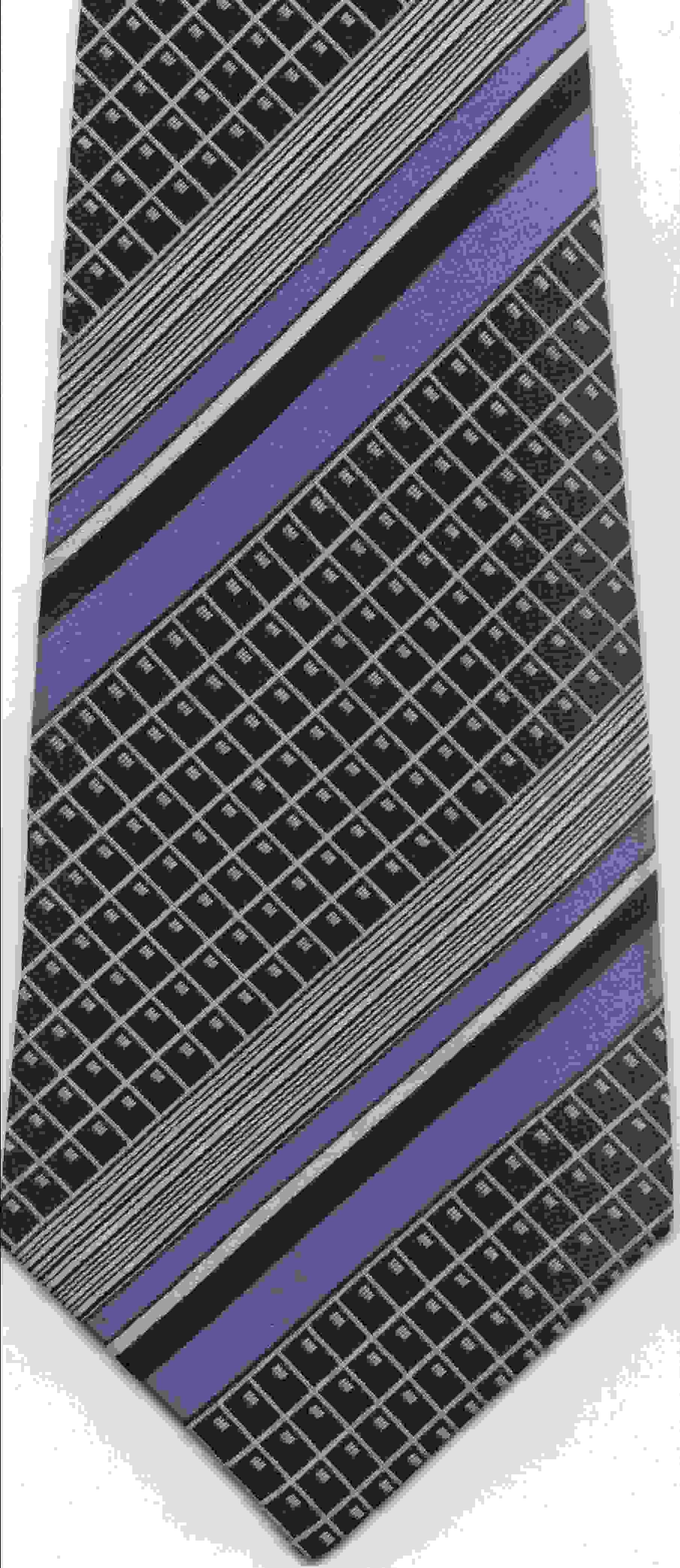A theory in the making....*
At this point in the
evolution of neckwear, ties are mostly ornamental -- sometimes a mandated
accessory. As such it's reasonable to discuss their ascetic purpose
with out considering functions like warmth or launderability.
Ties
provide a line of symmetry, dividing the top part of the wearer's body.
Part
of the function of a tie must have do with this symmetry or the spatial frequency
of the wearer and their garments. The tie's pattern
should complement the width of the lapels and/or any pattern in the
suit or shirt fabric. The ways patterns match up,
either exactly or in multiples, are the harmonics of the spatial frequencies.
The better or more regular the harmonics, the better the match. This
would predict that patterns with larger repeats or irregular repeats in pattern
would be more likely to be ugly. Further, solid ties would be less
likely, since the only spatial frequency would be the tie width.
Color clearly interacts with spatial frequency. Changes in
color provide contours that make up a pattern. Colors can enliven
a pattern with chromatic contrasts or harmonies. Bright colors
too, can bring attention to a tie and hence the wearer. Only the tie
will be noticed when colors are too powerful. Opponent colors are
likely to be unpleasant in close proximity because the colors will tessellate.
Florescent colors will also be more likely to be displeasing.
Anecdotally,
ugly tie image files compress poorly. They tend to look much
better with compression, and this has been a chronic difficulty with displaying
them on the web.
And of course, ties are worn by people. People
find others who are more symmetrical in appearance to be more attractive,
but perfect symmetry is dull and unappealing. Ties also, reflect
a certain amount of social conformity. Men are required
to wear them at times. I suspect two processes are at work:
one wanting symmetry and conformity; another wanting novelty
and stimulation. This could explain why a bold tie can "set off" a
drab outfit, yet the same tie would be loud with another suit.
It also could explain why people have different thresholds for acceptable ties. My impressions are that people are in good agreement about truly offensive ties, ties that don't go with anything, and perfectly acceptable ties, ties that can be worn with most outfits. The disputed ties are dominated by issues of colors and to a lesser extent, pattern.
* These comments may not apply to bow ties. I haven't observed
any ugly bow ties. This could be because they are less commonly worn,
or that they are mostly made in conservative patterns, or that less of the
tie is visible on the wearer. They serve a different visual function
-- more a "base" for the head rather than aa line of symmetry-- and may be
less reactive with spatial harmonics.
